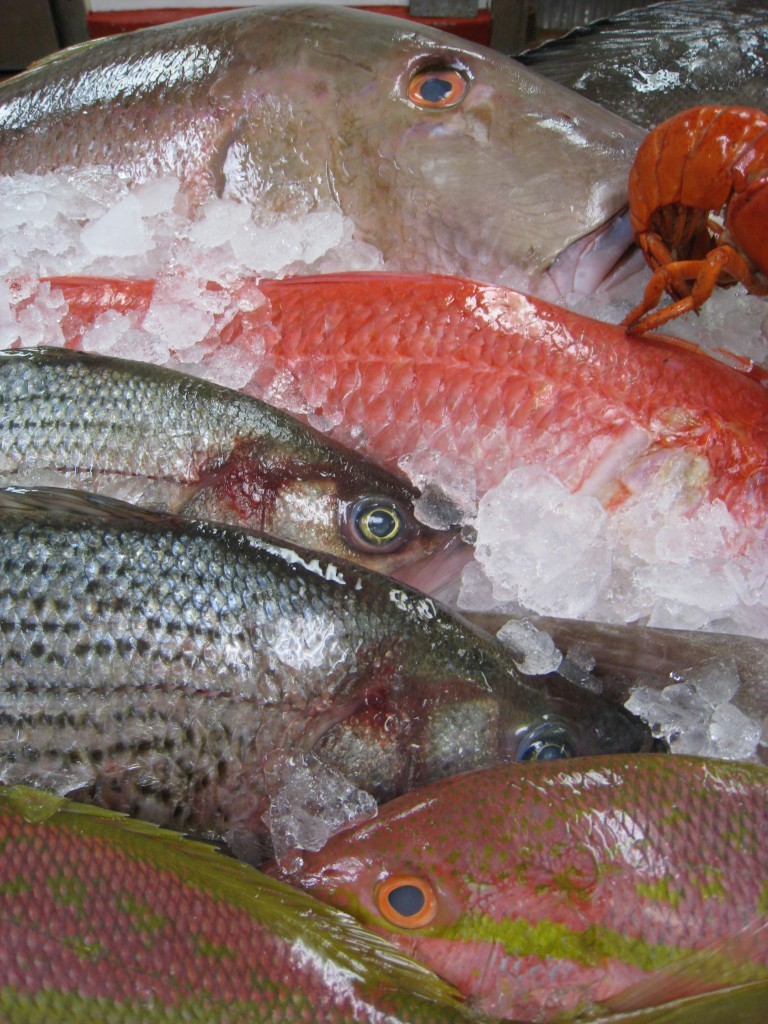“We’ve already shown that when we work together, we can protect our oceans for future generations. So let’s redouble our efforts. Let’s make sure that years from now we can look our children in the eye and tell them that, yes, we did our part, we took action, and we led the way toward a safer, more stable world.”
President Barack Obama, June 17, 2014
Anyone who knows me knows how much I love to eat seafood. I know you want to eat healthy seafood too. I know you, like me, want to know if the snapper you buy at the market is from clean, healthy US waters not from a farm in China.
Over the years, eating “sustainable” seafood is harder than it should be. Because over the years, the seafood industry and the oceans have had major issues that create a direct impact on the seafood we catch, buy and eat. Issues like fraud, illegal fishing, overfishing, ocean acidification, unsafe working conditions for fishers, polluted waters and more.
This week at the “Our Ocean” conference, an international conference on sustainable fisheries, marine pollution, and ocean acidification hosted by The State Department, these issues were addressed.
For once things are beginning to look a little less murky.
The recently released National Climate Assessment confirms that climate change is causing sea levels and ocean temperatures to rise. Changing temperatures can harm coral reefs and force certain species to migrate. In addition, carbon pollution is being absorbed by the oceans, causing them to acidify, which can damage coastal shellfish beds and reefs, altering entire marine ecosystems. In fact, the acidity of our ocean is changing 50 times faster than any known change in millions of years. And black-market fishing—fishing that is illegal, unreported, and unregulated —continues to pose a major threat to the sustainability of our world’s fisheries, economies and to global security, according to Oceana.
We can no longer pretend we live in a vacuum. Our ecosystem is a closed system. What we do on land affects the oceans.
Earlier this week I wrote how action and awareness on a personal level can bring change. But what about on a larger scale? Our federal government, while not perfect, has the power to change these issues on a very large level.
How does that work? And what does it have to do with you?
Early in his first term, President Obama recognized these significant challenges and launched the National Ocean Policy .
- The National Ocean Policy seeks to streamline more than 100 laws that govern our oceans and create a coordinated, science-based approach to managing the many resources and uses of our coasts and oceans.
- National Ocean Policy initiatives range from voluntary marine planning to releasing more federal data to supporting offshore renewable energy projects to making our ports more resilient to sea level rise.
Secretary Kerry has also issued a global call to action to protect the oceans.
This past week, as part of the Our Oceans conference, the President announced eight steps or “initiatives” that the United States is taking to answer that call.
8 New Actions to Protect and Preserve the Ocean
1. New protections for world-class marine areas. The President today announced a commitment to use his authority to protect some of our most precious marine landscape just like he has for our mountains and rivers and forests. To meet the President’s commitment, the Administration will immediately consider how we might expand protections near the Pacific Remote Islands Marine National Monument in the south-central Pacific Ocean, an area which contains some of the most pristine tropical marine environments in the world. These tropical coral reefs and associated marine ecosystems are also among the most vulnerable areas to the impacts of climate change and ocean acidification. Before making decisions about the geographic scope and details of future marine protections, we will consider the input of fishermen, scientists, conservation experts, elected officials, and other stakeholders. The President is also calling on other world leaders to join him in this effort to ensure that the world’s most valuable ocean ecosystems remain productive and pristine for our children and grandchildren.
2. Combating black market fishing and supporting fishermen. The President is directing Federal agencies to develop a comprehensive program aimed at deterring illegal fishing, addressing seafood fraud, and preventing illegally caught fish from entering the marketplace by increasing traceability and transparency. Black market fishing constitutes up to 20 percent of the wild marine fish caught each year around the world, and drains up to $23 billion from legitimate fishing enterprises. The program will be an important step in ending illegal, unreported, and unregulated fishing, building the market for legally and sustainably caught seafood, and supporting the men and women of the fishing industry.
In addition, the Administration is taking steps to protect coastal communities from the impacts of climate change, improve domestic aquaculture, and providing research to better understand the challenges facing our oceans.
3. Establishing a pathway to new marine sanctuaries. Last week, the National Oceanic and Atmospheric Administration released a final rule re-opening the public nomination process for proposing new sanctuaries in our oceans and Great Lakes. For the first time since 1995, Americans will be able to nominate nationally significant marine and Great Lakes areas as marine sanctuaries. This reflects the overwhelming consensus of more than 18,000 comments NOAA received on the proposed version of the rule and will give local communities and organizations the opportunity to voice their support for significant marine areas in need of protection.
4. Meeting diverse coastal needs with regional marine planning. Under the President’s National Ocean Policy, voluntary marine planning bodies are working all over the country to find commonsense ways for the wide range of people and organizations who live, work, and play in the ocean to enjoy the full benefits of its resources. Regional marine plans help balance coastal use issues including fishing, energy, and marine transportation with the interests of communities, ensuring maximum benefits for all. Last week, the Administration announced that the Northeast and Mid-Atlantic regional marine planning bodies will have their plans out the door by the end of the President’s term. This will allow fishing and coastal communities from Maine to Virginia to meet diverse needs and establish priorities for the use of their ocean areas, while making them less vulnerable to economic shocks and the resilience of climate change.
5. Understanding the impacts of ocean acidification. Today, the White House Office of Science and Technology Policy is releasing a white paper on ocean acidification, summarizing current scientific knowledge about this key challenge, its relationship to climate change, and its impacts on society, as well as highlighting key steps the Obama Administration is taking to better understand the problem and potential solutions.
6. $102 million to build resilience in coastal communities. Yesterday, the Department of the Interior announced $102 million in competitive grants funding science-based solutions to restore flood plains and natural barriers, such as marshes and wetlands along the Atlantic Coast. The funded projects will help deliver on the Administration’s Climate Action Plan commitment to make local communities more resilient against future storms.
7. Bolstering domestic shellfish aquaculture. Federal agencies are completing work on a new roadmap to streamline the permitting process for shellfish aquaculture. The roadmap will help shellfish farmers understand how to secure the permits they need and will help federal agencies identify ways to improve efficiency in the permitting process. By removing barriers in the permitting process, the United States can encourage shellfish farming and help rebalance our seafood trade. Currently, most seafood consumed in the U.S. is imported, resulting in a seafood trade deficit of between $8 and $10 billion a year. Farming more shellfish will also be an economic boon to local communities, creating jobs and investment on our shores.
8. National Strategic Plan for Federal Aquaculture Research. Aquaculture is an increasingly integral source of safe, nutritious, sustainable seafood for consumers in the United States and worldwide. Today, the interagency National Science & Technology Council’s Committee on Science is releasing a new National Strategic Plan for Federal Aquaculture Research to provide a framework for coordination and collaboration across agencies on research related to this important agricultural domain and to guide Federal agencies going forward as they prioritize their aquaculture-related research and development activities.
Thank you President Obama, Secretary John Kerry, Oceana and all the other people who stepped up to make these changes, so that our oceans are healthy and we can eat fresh, sustainably-sourced seafood for generations to come.
(Sources: Oceana.org, whitehouse.gov)









